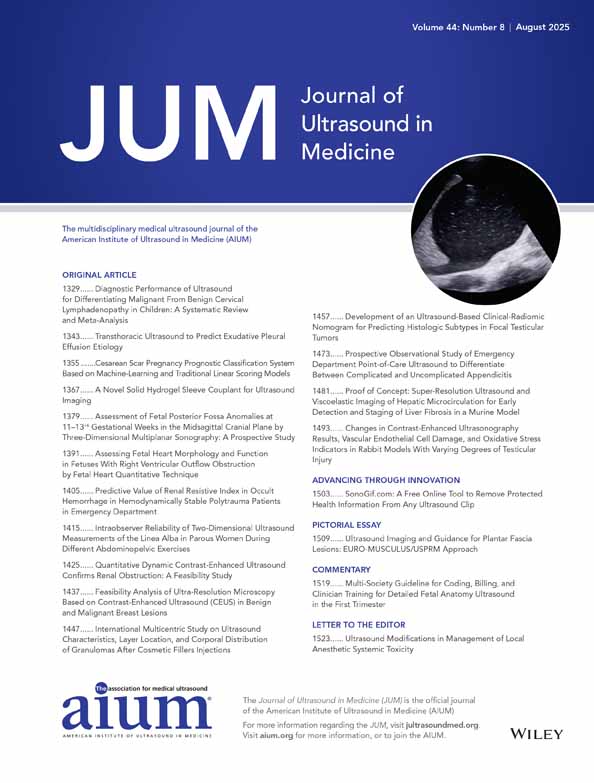Feasibility Analysis of Ultra-Resolution Microscopy Based on Contrast-Enhanced Ultrasound (CEUS) in Benign and Malignant Breast Lesions
Peng-Fei Sun and Li-Xue Zhai contributed equally to this work.
We thank Angela Morben, DVM, ELS, from Liwen Bianji (Edanz) (www.liwenbianji.cn) for editing the English text of a draft of this manuscript.
Abstract
Objective
To investigate the diagnostic value of quantitative analysis using ultra-resolution microscopy (URM) in differentiating benign from malignant breast lesions.
Material and Methods
This prospective study enrolled 60 patients with 60 breast lesions who underwent contrast-enhanced ultrasound (CEUS) using SonoVue (Bracco Imaging, Italy) between June 2024 and August 2024. Quantitative parameters of microvascular density and velocity maps were generated for the lesion interior, rim region, and combined interior and rim area using URM software on CEUS images. The parameters were analyzed for differences between benign and malignant breast lesions, and their diagnostic efficacy was evaluated.
Results
Multivariate analysis indicated that breast malignancy was associated with microvascular ratio and complexity level. The area under the curve (AUC) for the combined diagnostic method that included microvascular parameters at the lesion margin (Rim group) and BI-RADS classification + Rim was higher than other diagnostic approaches (AUC = 0.92), although there was no significant difference when compared with the combined approach of evaluating parameters within the lesion and at the margin alongside BI-RADS (Mass + Rim + BI-RADS group, P = .293). The BI-RADS group showed high sensitivity (100%) and negative predictive value (100%); the Mass group (parameters within the lesion) demonstrated higher sensitivity (87.0%), and the Rim group (parameters at the lesion margin) exhibited the highest specificity (91.9%).
Conclusion
URM shows potential in distinguishing between benign and malignant breast lesions, offering a precise assessment of lesion hemodynamics and providing valuable information for clinical diagnosis and treatment.
Open Research
Data Availability Statement
The data that support the findings of this study are available from the corresponding author upon reasonable request.




